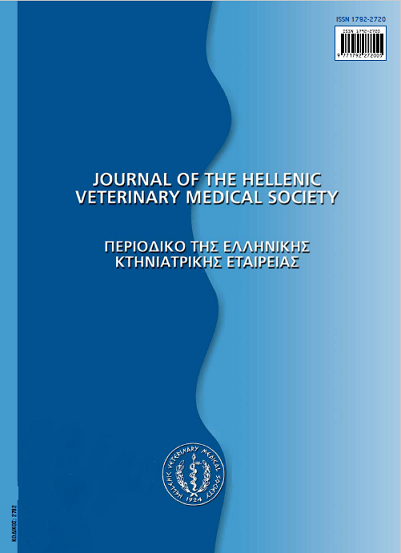Ultrasonographic examination of the canine skin: a review
Résumé
Real time B-mode ultrasonography is a non-invasive diagnostic imaging modality that does not use radiation and allows examination of various soft tissue structures. For many years it is used in human dermatology and in the last decade it has entered the canine dermatology arena. Based on the frequency employed, cutaneous ultrasonography may be classified as intermediate- (7-15 MHz) or high-frequency (20 MHz or higher). Using intermediate frequency, the ultrasonographic features of normal canine skin are consistent and three distinct visible layers can be seen. Using a 50 MHz transducer, the epidermis and hair follicles are also identified and accurate measurements of skin thickness can be obtained. The aim of this article is to review the available published knowledge regarding ultrasonographic examination of the canine skin.
Article Details
- Comment citer
-
MANTIS (Π. ΜΑΝΤΗΣ) P., & SARIDOMICHELAKIS (Μ.Ν. ΣΑΡΙΔΟΜΙΧΕΛΑΚΗΣ) M. N. (2018). Ultrasonographic examination of the canine skin: a review. Journal of the Hellenic Veterinary Medical Society, 67(1), 17–20. https://doi.org/10.12681/jhvms.15619
- Numéro
- Vol. 67 No 1 (2016)
- Rubrique
- Review Articles

Ce travail est disponible sous licence Creative Commons Attribution - Pas d’Utilisation Commerciale 4.0 International.
Authors who publish with this journal agree to the following terms:
· Authors retain copyright and grant the journal right of first publication with the work simultaneously licensed under a Creative Commons Attribution Non-Commercial License that allows others to share the work with an acknowledgement of the work's authorship and initial publication in this journal.
· Authors are able to enter into separate, additional contractual arrangements for the non-exclusive distribution of the journal's published version of the work (e.g. post it to an institutional repository or publish it in a book), with an acknowledgement of its initial publication in this journal.
· Authors are permitted and encouraged to post their work online (preferably in institutional repositories or on their website) prior to and during the submission process, as it can lead to productive exchanges, as well as earlier and greater citation of published work.












